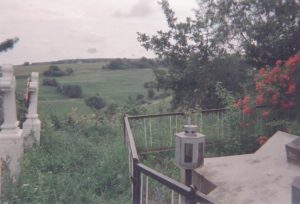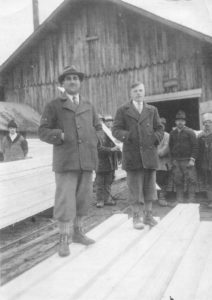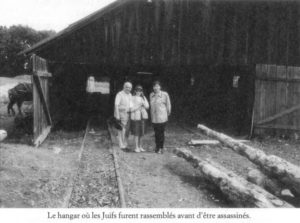The Unter-Stanestie/ Vivos (Vivis) Pogrom: July 5-6, 1941
My mother and grandparents survived a pogrom which took place on July 5th and 6th, 1941 in the small village of Unter-Stanestie (Stanestie de Jos) and in its tiny, neighboring, almost unknown, unmentioned village of Vivis (Vivos) in Romania (now Ukraine). A summary of the events are detailed below as part of a concise and accurate article:
“In Stanesti de Jos, a village east of Chernowitz…the locals organized a Ukrainian national committee to take control of the village, ‘arresting’ the Jews and holding them in the mayor’s office or the saw mill. The Ukrainian nationalists soon began to murder their prisoners, and when the Romanian army reached Stanesti de Jos, the pogrom was intensified. Upon his arrival, the Romanian commander put a stop to the blood bath, but by that time between 80 and 130 Jews had already been killed. The fact that a local gendarmerie commander could stop a massacre underscores the fact that the impetus for pogroms often came from below… The Jews barricaded themselves in their homes, and the Ukrainians ‘patrolled’ usually armed with agricultural tools, for firearms were not widely available. The Ukrainians then decided to ‘fetch’ the Jews from their homes and concentrate them in one place. A list was compiled from which the names of the Jewish men were read out one by one, after which these were led away… Most of the Jewish men were beaten to death – only a few were shot….
Chana Weisenfeld, who was …from Stanesti de Jos, related how Ukrainian neighbors rampaged through the village armed with hammers and sickles. According to Weisenfeld, more than 80 Jews were killed in the pogrom. Close to the village, local perpetrators killed a pregnant woman and beheaded her… The massacres of Jews by the local population sometimes seem especially puzzling because the perpetrators are civilians and the victims are their neighbors…. Later when it became clear that it was possible to murder with impunity, people murdered so that no one would be there to remember the stolen property. (Geissbuhler 2014, 434-439).
No Jews remained in Stanesti. My family’s survival was close to miraculous after my grandfather was captured and escaped. Chana Weisenfeld, mentioned above, is my mother’s first cousin, aged 82 today (2016). The pregnant woman, beheaded in the forest of Vivis, was my grandmother’s sister and my mother’s aunt. Her name was Chaika. I am her namesake in Hebrew; Chaya, and in English; Carol.
References:
Elias, Carol, ” ’I Love You, They Didn’t Say’- Holocaust and Diaspora Survival: the Next Generations”, Orion Books, Israel, 2015.
Geissbuhler, Simon, “‘He Spoke Yiddish Like A Jew’ – Neighbors Contribution to the Mass Killings of Jews in Northern Bukovina and Bessarabia in July, 1941”. “Holocaust and Genocide Studies”, 28, no.3, Winter, 2014, pp. 434-449.
Following are pictures related to Stanesti de Jos – the gravesite now and pictures from then.
Picture 1: The mass Jewish gravesite for the pogrom victims located within the Christian cemetery.

In the 1960’s after a flood the bones came out and then the mass gravesite was built in the Christian cemetery, according to Dr. Kahn, by contributions from either Jews from the US or elsewhere.
Picture 2: My grandfather, Abraham Sussman, in hat, mill manager before WWII, at the pogrom site with Ukrainian workers.

In the following picture you can see the same wood mill which is where the main pogrom took place and a mass grave was dug. Approximately 80-100 men were killed there.
Dr. Madeleine Kahn, like my mother, was 9 years old the day of the pogrom and she visited the village in 1980’s.
